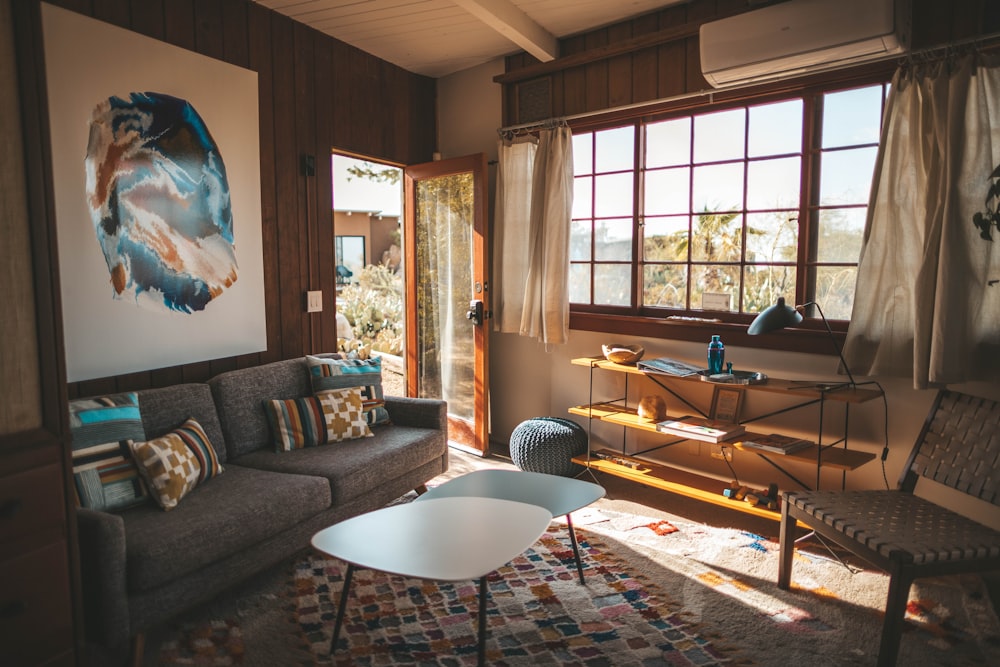Discover the Art of Architecture : A Guide for Homeowners in 2023
Welcome to our guide to discover the art of architecture! Whether you’re a new homeowner or someone looking to build your dream home, understanding the basics of architecture is essential. In this article, we’ll take you through the process of working with an architect, designing your home, navigating building permits and regulations, working with contractors and builders, choosing materials and finishes, creating an inviting interior, and maintaining and improving your property.
Table of Contents
- 0.1 Discover the Art of Architecture
- 0.2 Understanding the Basics of Architecture
- 0.3 Working with an Architect
- 0.4 Designing Your Dream Home
- 0.5 Navigating Building Permits and Regulations
- 0.6 Working with Contractors and Builders
- 0.7 Choosing Materials and Finishes
- 0.8 Interior Design and Home Decor
- 0.9 Maintaining and Improving Your Home
- 1 Conclusion
Discover the Art of Architecture
Architecture is not just about building structures; it’s about creating spaces that reflect your personality, lifestyle, and needs. It’s the art of designing spaces that are beautiful, functional, and sustainable. With the help of an architect, you can turn your vision into reality.
Throughout this guide, we’ll provide you with valuable insights and expert advice to help you make informed decisions when it comes to your home. Whether you’re a first-time homeowner or have experience in renovation projects, this guide will serve as your go-to resource.
So, let’s dive in and discover the art of architecture together!
Understanding the Basics of Architecture

When it comes to building your dream home, understanding the basics of architecture is essential. Architecture is more than just designing a building; it’s about creating spaces that are functional, efficient, and aesthetically pleasing. In this section, we will explore the definition and importance of architecture, discuss key principles of architectural design, and explore different architectural styles.
Definition and Importance of Architecture
Architecture can be defined as the art and science of designing and constructing buildings and other physical structures. It combines elements of creativity, engineering, and problem-solving to create spaces that meet people’s needs and enhance their quality of life.
Understanding the importance of architecture is crucial as it influences our daily lives in numerous ways:
- Functionality: Architects ensure that buildings are designed to serve their intended purpose efficiently. They consider how spaces will be used and how people will move through them.
- Aesthetics: Good architecture doesn’t just focus on functionality; it also prioritizes visual appeal. Beautifully designed buildings not only enhance their surroundings but also contribute to the overall character of a place.
- Sustainability: With the growing concern for the environment, architects play a critical role in creating sustainable and energy-efficient buildings. They consider factors like site orientation, materials, and energy consumption to minimize environmental impact.
Key Principles of Architectural Design
Architectural design is guided by several key principles that shape the overall form and function of a building:
- Proportion and Scale: Architects carefully consider the size and proportion of elements within a building to create a harmonious visual balance.
- Balance: Achieving balance in architecture involves distributing visual weight evenly throughout a structure or space.
- Rhythm: Rhythm creates a sense of movement and visual interest by repeating elements or patterns throughout a building.
- Unity: Unity refers to the coherence and harmony of a building’s design, where all elements come together to create a cohesive whole.
Different Architectural Styles
Architecture encompasses a diverse range of styles that reflect the cultural, historical, and geographical contexts in which they emerged. Here are a few popular architectural styles:
| Style | Description |
|---|---|
| Modernism | Emphasizes simplicity and functionality, often using sleek lines and minimal ornamentation. |
| Traditional | Draws inspiration from historical designs, incorporating ornate details and classical elements. |
| Contemporary | Characterized by innovative and experimental designs, often featuring unique forms and materials. |
| Mediterranean | Inspired by the architecture of Mediterranean countries, featuring elements like arches and clay roofs. |
| Colonial | Reflects the architectural styles of former colonial powers, such as Georgian and Federal styles. |
Understanding different architectural styles can help you identify your preferences and guide your design decisions when working with an architect.
By understanding the basics of architecture, you’ll be better equipped to communicate your needs and preferences to an architect, ultimately leading to the creation of a home that is both functional and aesthetically pleasing. In the next section, we will delve into the process of working with an architect.
Working with an Architect
When it comes to designing and building your dream home, working with an architect is key to ensuring a successful and well-executed project. An architect is a trained professional who specializes in the art and science of designing buildings. They will not only help bring your vision to life but also ensure that the structure is functional, safe, and aesthetically pleasing. Here are some essential things to consider when working with an architect:
Finding the Right Architect for Your Project
Finding the right architect is crucial to the success of your project. Here are a few tips to help you in your search:
- Do your research: Look for architects with experience in the type of project you have in mind. Browse through their portfolios and see if their style aligns with your vision.
- Get recommendations: Seek recommendations from friends, family, or other professionals in the construction industry. They may have worked with architects in the past and can provide valuable insights.
- Schedule interviews: Once you have a list of potential architects, schedule interviews to discuss your project in detail. It’s important to find an architect who understands your needs and has a collaborative approach.
The Architectural Design Process
The architectural design process is a step-by-step approach that the architect follows to develop the plans and drawings for your home. Here are the key stages involved:
- Initial consultation: The architect will meet with you to understand your requirements, budget, and timeline. This is where you can discuss your vision and any specific design preferences you have.
- Conceptual design: Based on the information gathered from the initial consultation, the architect will create preliminary design sketches. These sketches will give you an idea of the overall look and feel of your home.
- Design development: Once the conceptual design is approved, the architect will develop detailed drawings and plans. This includes floor plans, elevations, and specifications for materials and finishes.
- Permitting and approvals: The architect will assist you in obtaining the necessary building permits and approvals from local authorities. They will ensure that your design complies with zoning and environmental regulations.
- Construction documentation: The architect will create detailed construction drawings that will serve as a guide for the builders and contractors. These drawings include information about structural elements, plumbing, electrical systems, and more.
Budgeting and Timeline Management
Working within a budget and adhering to a timeline is crucial for a successful project. An experienced architect will help you navigate these aspects. Here are some ways an architect can assist:
- Cost estimation: Architects have a good understanding of construction costs and can provide you with an estimated budget for your project. They will also work closely with you to prioritize spending and make design choices that align with your budget.
- Value engineering: Architects can suggest alternative materials or design solutions that meet your needs while keeping costs under control. They can help you make informed decisions that balance quality and affordability.
- Timeline management: Architects play a crucial role in ensuring that the project stays on track. They will work closely with contractors and builders to monitor progress and address any delays or issues that may arise during construction.
Working with an architect is an exciting and collaborative process. They will guide you through every step of the way, from initial design concepts to the final construction. Their expertise and attention to detail will help you achieve the home of your dreams while ensuring a smooth and efficient building process. So, don’t hesitate to reach out to a professional architect and embark on the journey of creating your dream home!
Designing Your Dream Home
Designing your dream home is an exciting and rewarding experience. It’s an opportunity to create a space that reflects your personality, meets your needs, and enhances your daily living. Whether you’re planning to build a new home or renovate your existing one, thoughtful design is key to achieving the house of your dreams.
Here’s a guide to help you navigate the design process and ensure that your dream home becomes a reality:
Identifying Your Needs and Preferences
Before you start designing, it’s important to identify your needs and preferences. Think about how you’ll use each space in your home and what features are essential for you and your family. Consider factors like the number of bedrooms and bathrooms, the size of the kitchen, and the layout of common areas like the living room and dining room.
Ask yourself questions like:
- What is your lifestyle like? Do you love hosting parties or prefer cozy nights in?
- Are there any specific hobbies or activities that you need space for?
- What are your must-haves in terms of functionality and aesthetics?
By understanding your needs and preferences, you’ll be able to create a home that is tailored to your unique lifestyle.
Space Planning and Functional Layouts
Once you have a clear vision of your needs and preferences, it’s time to start planning the layout of your home. Space planning involves determining how each area of your home will be used and how it will flow from one room to another.
Consider the following aspects of space planning:
- Room sizes and proportions: Ensure that each room is appropriately sized for its function and that there is a balanced flow throughout the house.
- Traffic flow: Plan the circulation patterns within your home to ensure that there are no bottlenecks or awkward transitions between spaces.
- Open concept vs. separate rooms: Decide whether you prefer an open concept layout, where rooms flow seamlessly into one another, or separate rooms for distinct functions.
Remember, integrating functionality into your design is crucial for long-term satisfaction with your home.
Incorporating Sustainable and Energy-Efficient Design
In recent years, there has been a growing emphasis on sustainable and energy-efficient design in the field of architecture. Incorporating these principles into the design of your dream home not only reduces your environmental footprint but also saves you money on energy costs in the long run.
Consider the following sustainable design strategies:
- Passive solar design: Maximize natural light and heat gain through strategic window placement and shading.
- Green materials: Choose eco-friendly materials like bamboo flooring, recycled countertops, and low VOC paints.
- Energy-efficient appliances and fixtures: Opt for energy-efficient appliances, LED lighting, and water-saving fixtures.
By prioritizing sustainability, you’ll create a home that is environmentally responsible and comfortable to live in.
Designing your dream home is an opportunity to bring your vision to life. By identifying your needs and preferences, planning functional layouts, and incorporating sustainable design principles, you’ll create a space that is beautiful, practical, and environmentally friendly.
So, what are you waiting for? Start envisioning your dream home and make it a reality!
When embarking on a home construction or remodeling project, it’s essential to understand and navigate the world of building permits and regulations. These requirements vary based on your location and the scope of your project, but they are crucial for ensuring the safety and legality of your home. In this section, we’ll guide you through the key considerations and steps involved in this process.
Understanding Local Building Codes
Local building codes are sets of regulations and standards that dictate construction practices in a specific area. They cover various aspects, including structural integrity, electrical systems, plumbing, fire safety, and more. It’s essential to familiarize yourself with these codes to ensure that your project meets all the necessary requirements.
Here are some important points to consider:
- Research: Start by researching the building codes applicable to your area. Contact your local city or county planning department to obtain the relevant information. They can provide you with the specific codes and regulations that apply to your project.
- Stay Updated: Building codes are periodically updated, so it’s crucial to stay informed about any changes. Check for updates on your local government’s website or consult with your architect or contractor to ensure compliance with the latest regulations.
- Work with Professionals: Architects, contractors, and builders are familiar with local building codes and can guide you through the process. Their expertise can help you avoid potential compliance issues and ensure that your project meets all necessary requirements.
Obtaining Necessary Building Permits
Building permits are official documents obtained from the local government that grant you permission to construct, modify, or demolish a building. They are essential for ensuring that your project adheres to the prescribed regulations and standards. Here’s what you need to know about obtaining building permits:
- Types of Permits: Depending on the nature of your project, you may need different permits, such as building permits, electrical permits, plumbing permits, etc. Your architect or contractor can help determine the specific permits required for your project.
- Submission Process: Once you have a clear understanding of the permits you need, you must submit an application to the local building department. This usually entails providing detailed plans and specifications of your project. The department will review your application and plans to ensure compliance with building codes and other regulations.
- Permit Fees: Most building departments charge fees for building permits. The fees vary depending on the scope and value of your project. Be sure to budget for these costs when planning your construction or remodeling budget.
Complying with Zoning and Environmental Regulations
In addition to building codes, you must also comply with zoning and environmental regulations. Zoning regulations determine how properties can be used within a specific area, while environmental regulations protect natural resources and ensure sustainable development. Here are some considerations:
- Zoning Restrictions: Zoning regulations specify various restrictions, such as setbacks, height limits, and land use categorizations. Understanding these restrictions is crucial to ensuring that your project complies with the appropriate zoning requirements.
- Environmental Impact: Some projects may need to undergo an environmental impact assessment to ensure they do not harm the surrounding environment. This assessment determines the potential impact on wildlife, water resources, air quality, and other ecological factors.
- Variances and Exemptions: If your project does not comply with certain zoning or environmental regulations, you may need to obtain a variance or exemption. This typically involves submitting additional documentation and attending public hearings to demonstrate that your project meets specific criteria.
Navigating building permits and regulations can be complex, but it’s an important part of creating a safe and legally compliant home. By understanding local building codes, obtaining the necessary permits, and complying with zoning and environmental regulations, you can ensure a smooth construction process and peace of mind for years to come. Remember, working with professionals such as architects, contractors, and builders is invaluable in guiding you through these important steps.
Also Read: Discovering Your Home Style : A Guide for Homeowners in 2023
Working with Contractors and Builders
When it comes to bringing your architectural vision to life, working with contractors and builders is an essential part of the process. These are the professionals who will actually construct your dream home, so finding the right team is crucial. Here are some key points to consider when working with contractors and builders:
Selecting the Right Contractor or Builder
Finding the right contractor or builder can make all the difference in the success of your project. Here are a few tips to help you choose the right team:
- Research: Start by doing thorough research on local contractors and builders in your area. Look for companies with a good reputation and positive reviews from previous clients.
- Ask for Recommendations: Reach out to friends, family, or neighbors who have recently completed construction projects. They can provide valuable insights and recommendations based on their own experiences.
- Interview Multiple Candidates: Don’t settle for the first contractor or builder you come across. Interview at least three candidates and compare their expertise, communication skills, and pricing.
- Review Portfolios: Take a close look at the portfolios of the contractors or builders you are considering. Pay attention to the types of projects they have worked on and whether their style aligns with your vision.
- Check Licenses and Insurance: Ensure that the contractor or builder you choose is properly licensed and insured. This will protect you from any liability in case of accidents or damage during construction.
Collaborating with Construction Teams
Once you have selected a contractor or builder, it’s important to establish open lines of communication and maintain a collaborative relationship throughout the construction process. Here’s how you can effectively collaborate with your construction team:
- Regular Meetings: Schedule regular meetings with your contractor or builder to discuss progress, changes, and any concerns you may have. This will ensure everyone is on the same page and can address any issues in a timely manner.
- Clear Communication: Clearly communicate your expectations and vision to your construction team. Provide them with detailed plans and specifications, and encourage open dialogue to address any questions or concerns.
- Project Management: Stay involved in the project by monitoring progress and addressing any issues promptly. This will help keep the construction process on track and ensure that any concerns are addressed and resolved in a timely manner.
- Document Everything: Document all agreements, changes, and decisions in writing to avoid any misunderstandings or disputes later on. This includes change orders, payment schedules, and any additional modifications to the original plans.
Monitoring the Construction Process
While you may not have the technical expertise of a contractor or builder, it’s still important to keep an eye on the construction process and ensure that everything is going according to plan. Here are a few things to keep in mind:
- Regular Site Visits: Visit the construction site regularly to observe progress and address any concerns. This will also give you an opportunity to discuss any changes or modifications that may arise during the construction process.
- Quality Control: Pay attention to the quality of work being done and ensure that it meets your standards. If you notice any subpar workmanship or potential issues, bring them to the attention of your contractor or builder as soon as possible.
- Timelines and Budgets: Keep track of the project timeline and budget to ensure that everything is on track. Discuss any potential delays or budget adjustments with your contractor or builder to avoid any surprises later on.
- Be Flexible: Construction projects can sometimes encounter unexpected challenges or delays. Be prepared to be flexible and work with your contractor or builder to find solutions and keep the project moving forward.
Working with contractors and builders requires a collaborative approach and effective communication. By selecting the right team, establishing clear expectations, and monitoring the construction process, you can ensure that your dream home is built to your satisfaction. Remember, this is your home, and you have the final say in the decision-making process.
Choosing Materials and Finishes
https://images.unsplash.com/photo-1673865641469-34498379d8af?q=80&w=1480&auto=format&fit=crop&ixlib=rb-4.0.3&ixid=M3wxMjA3fDB8MHxwaG90by1wYWdlfHx8fGVufDB8fHx8fA%3D%3D
When it comes to designing your dream home, one of the most exciting and important aspects is choosing the right materials and finishes. The materials you select will not only affect the overall look and feel of your home but also impact its durability, sustainability, and maintenance requirements. With the wide variety of options available, it can be overwhelming to make the right choices. But fear not! In this section, we will guide you through the process of selecting the perfect materials and finishes for your home.
Exploring Different Building Materials
Before diving into the world of building materials, it’s crucial to consider factors such as budget, climate, and personal preferences. Here are a few popular building materials to consider:
- Wood: A classic choice that adds warmth and natural beauty to any space. Wood can be used for flooring, cabinetry, and even structural elements like beams and columns. It’s available in various types, such as oak, maple, and bamboo, each with its unique characteristics.
- Stone: If you’re after a timeless and elegant look, stone might be the perfect choice. From granite and marble to limestone and slate, there’s a wide range of stone options to suit different styles. Stone is commonly used for countertops, flooring, and feature walls.
- Brick: Known for its durability and charm, brick offers a traditional aesthetic that works well with both modern and rustic designs. It can be used for exterior walls, fireplaces, and accents throughout your home.
- Concrete: A versatile material that can be used in various forms, including polished concrete floors, countertops, and decorative wall panels. Concrete offers a contemporary and minimalist look while providing durability and low-maintenance qualities.
Sourcing Sustainable and Eco-Friendly Materials
In today’s world, sustainability and eco-friendliness are becoming increasingly important factors when choosing building materials. Here are a few tips to ensure your materials are environmentally friendly:
- Recycled and Reclaimed Materials: Consider using materials that have been repurposed from previous buildings or construction projects. This not only reduces waste but also adds character and uniqueness to your home.
- Certified Sustainable Materials: Look for materials that have been certified by organizations like the Forest Stewardship Council (FSC) or the Cradle to Cradle Certified™ program. These certifications ensure that the materials have been responsibly sourced and produced.
- Low VOC (Volatile Organic Compounds) Products: VOCs are chemicals found in many building materials that can be harmful to both human health and the environment. Opting for low VOC products, such as paints and adhesives, will help maintain good indoor air quality.
Considering Aesthetics and Durability
While sustainability is important, it’s also essential to consider the aesthetic appeal and durability of the materials you choose. Here are a few factors to keep in mind:
- Color and Texture: Consider how the colors and textures of the materials will complement your overall design vision. Do you want a sleek and modern look or a warm and rustic feel? Choose materials that align with your desired aesthetic.
- Maintenance Requirements: Some materials require more maintenance than others. Consider how much time and effort you’re willing to invest in upkeep. For example, natural wood may need regular sealing or refinishing, while engineered hardwood requires less maintenance.
- Long-Term Durability: Think about the lifespan of the materials you choose. Investing in durable materials upfront can save you money in the long run by avoiding frequent repairs or replacements. Consult with your architect or contractor to determine which materials offer the best durability for your specific needs.
By taking the time to research and consider these factors, you’ll be well on your way to selecting the perfect materials and finishes for your dream home. Remember, it’s not only about the visual appeal but also the sustainability and longevity of your choices. Happy designing!
Interior Design and Home Decor
When it comes to creating a beautiful and inviting home, the interior design and home decor play a crucial role. The way you style and decorate your living spaces can greatly impact the overall ambiance and functionality of your home. Whether you’re looking to update your current interior or starting from scratch in a new home, here are some key considerations for achieving a stunning and cohesive look.
Creating Harmony Between Interior and Exterior
One important aspect of interior design is creating a seamless flow between the interior and exterior of your home. By incorporating elements that connect the two spaces, you can enhance the overall aesthetic appeal and create a sense of harmony. Here are some tips to achieve this:
- Natural Light: Maximize the use of natural light by strategically placing windows and skylights to bring the outdoors in. This not only brightens up your living spaces but also creates a visual connection with nature.
- Indoor Plants: Incorporate indoor plants or a living green wall to add a touch of nature and create a fresh and vibrant atmosphere.
- Continuity in Materials: Use materials and finishes that are both durable and visually consistent with the exterior. This could include natural wood, stone, or even recycled materials for an eco-friendly touch.
Choosing Color Schemes and Textures
The color scheme and textures you choose for your home can greatly impact the overall mood and atmosphere. Here are some considerations to keep in mind:
- Color Psychology: Different colors evoke different emotions, so choose colors that align with the atmosphere you want to create in each room. For example, warm tones like yellows and oranges can create a cozy and inviting feel, while blues and greens create a sense of calmness.
- Texture Variety: Incorporate a variety of textures to add depth and interest to your space. Combine smooth surfaces with rough textures or use fabrics with different textures to create a layered look.
Selecting Furniture and Decorative Elements
The furniture and decorative elements you choose are the finishing touches that bring your space to life. Here are some tips for selecting the right pieces:
- Functionality: Consider the functionality of each piece of furniture and ensure it meets your specific needs. For example, if you have a small living room, opt for a sofa with built-in storage to maximize space.
- Statement Pieces: Choose a few statement pieces that reflect your personal style and create a focal point in each room. This could be a bold piece of artwork, a unique light fixture, or a statement furniture piece.
- Mixing Old and New: Don’t be afraid to mix different styles and eras to create a more eclectic and personalized look. Combining vintage and modern pieces adds character and uniqueness to your space.
Remember, the key to successful interior design and home decor is to create a space that not only looks beautiful but also reflects your personality and meets your daily needs. So, take the time to plan and curate your space to create a home that you truly love. Happy decorating!
Maintaining and Improving Your Home
Congratulations on building your dream home! Now that you have settled in, it’s important to focus on maintaining and improving your home to ensure its longevity and to adapt to your changing needs and technologies. In this section, we will explore some key aspects of maintaining and improving your home.
Regular Maintenance and Inspections
Regular maintenance is essential for keeping your home in top shape and preventing costly repairs down the line. Here are some tasks you should consider:
- Inspecting your home: Conduct regular inspections to identify any issues such as leaks, cracks, or wear and tear. Look for signs of water damage, pest infestations, and faulty electrical systems.
- Cleaning gutters: Clear out debris from your gutters to prevent water damage and flooding.
- Servicing HVAC systems: Schedule regular maintenance for your heating, ventilation, and air conditioning (HVAC) systems to ensure they operate efficiently and to prolong their lifespan.
- Checking plumbing: Look out for leaky faucets, pipes, or toilets, and address them promptly to prevent water damage and high water bills.
- Maintaining the exterior: Keep your home’s exterior well-maintained by pressure washing, repainting, and repairing any damaged areas.
Renovation and Expansion Projects
As your family grows or your needs change, you may consider renovating or expanding your home. Here are some considerations for such projects:
- Planning and budgeting: Determine the scope of your renovation or expansion project and set a budget. It’s important to have a clear vision of what you want to achieve and consult with professionals such as architects or interior designers.
- Obtaining necessary permits: Check with your local building department to ensure you have the required permits for your project. This will help you avoid legal issues and ensure that your renovation meets safety and zoning regulations.
- Hiring professionals: Depending on the complexity of the project, you may need to hire contractors, builders, or other professionals. Always do your due diligence and select reliable and experienced individuals or firms.
- Sustainable renovations: Consider incorporating sustainable and energy-efficient design principles into your renovation, such as installing energy-efficient appliances, using eco-friendly building materials, and implementing smart home technologies.
Adapting to Changing Needs and Technologies
As time goes on, your lifestyle and technology needs may evolve. Here are some ways to adapt your home to meet these changes:
- Home automation: Explore smart home technologies that can enhance comfort, convenience, and energy efficiency. From lighting and temperature control to security systems and entertainment, home automation offers a wide range of possibilities to make your life easier.
- Flexible spaces: Design your home with flexible spaces that can adapt to different functions. Consider multipurpose rooms or convertible furniture that can transform a space from a home office to a guest room, for example.
- Universal design: Incorporate universal design principles into your home to accommodate accessibility needs for all age groups and abilities. This may include features such as wide doorways, accessible bathrooms, and easy-to-reach storage solutions.
- Embrace sustainability: As awareness of environmental issues grows, consider implementing sustainable practices such as rainwater harvesting, solar panels, and energy-efficient appliances. These not only reduce your carbon footprint but can also lead to long-term cost savings.
By focusing on regular maintenance, undertaking renovation projects when needed, and adapting to changing needs and technologies, you can ensure that your home remains a comfortable and functional space that meets your requirements for years to come.
Whether you are maintaining your home or making improvements, remember to consult with professionals when needed and stay updated with the latest trends and technologies. Enjoy the process of enhancing your home and creating an environment that truly reflects your style and needs.
Now that you have gathered knowledge about maintaining and improving your home, you can confidently take on the exciting journey of homeownership!
Also Read: Open Concept Living : Architectural Ideas for Spacious and Airy Homes in 2023
Conclusion
Designing and building your dream home is an exciting and rewarding journey. By understanding the basics of architecture, working with an architect, and navigating building permits and regulations, you can ensure a smooth and successful project. Additionally, choosing the right materials and finishes, focusing on interior design and home decor, and maintaining and improving your home will make it a place you can truly call your own.
Remember, the key to a successful architectural project is to have a clear vision of what you want and to work with experts who can bring that vision to life. Whether you’re building a new home or renovating an existing one, Arkitecture Today is here to inspire you with fresh ideas, expert tips, and a daily dose of architecture and design inspiration. Check out our blog here for more articles and information.
But before we part ways, let us leave you with this final thought: Building a home is more than just creating a structure; it’s about creating a sanctuary that reflects your personality, values, and lifestyle. With the right guidance and resources, you can transform your dream into a reality. Happy designing!
Product Mention:
If you’re looking for high-quality architectural design services, consider partnering with our expert team at Arkitecture Today. We have a wealth of experience in creating stunning and functional spaces that meet your unique needs and preferences. Contact us today for a free consultation. Together, we can turn your dream home into a reality.
Frequently Asked Questions
- What should homeowners consider when choosing an architect?
Homeowners should consider factors such as the architect’s experience, portfolio, communication skills, understanding of their vision, certification and licensing, and client testimonials when choosing an architect. - What is the role of an architect in the home building process?
Architects play a crucial role in the home building process. They create functional and aesthetic designs, provide guidance on building materials and construction techniques, obtain necessary permits, oversee the construction process, and ensure that the project meets building codes and regulations. - How long does it typically take to complete a residential architectural project?
The duration of a residential architectural project can vary depending on the complexity of the design, size of the project, and other factors. It may take anywhere from a few months to over a year to complete a residential project. - What is the cost associated with hiring an architect?
The cost of hiring an architect can vary depending on factors such as the architect’s experience, the scope of the project, location, and the level of customization required. Typically, architects charge a percentage of the total construction cost or an hourly fee. - Do homeowners need to obtain permits for architectural projects?
Yes, homeowners usually need to obtain permits for architectural projects, especially for major renovations or new construction. Architects can help homeowners in the permit application process and ensure that the project complies with local building codes and regulations.














